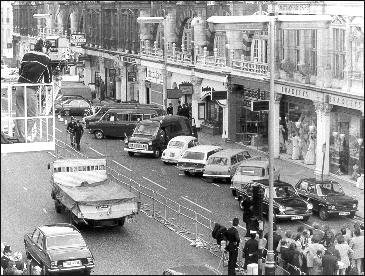Sunday, March 19, 2023
The First Bank Heist in America on This Day in History
Sunday, March 12, 2023
The McKinney Quadruple Murder on This Day in History
Wednesday, February 22, 2023
The Largest Cash Robbery in the UK on This Day in History
Tuesday, January 17, 2023
The Great Brink's Robbery on This Day in History
Wednesday, January 4, 2023
The Sadistic Dubrow Furniture Store Robbery on This Day in History
This Day in History: Philadelphia’s "Black Mafia" gang committed the brutal robbery of the Dubrow Furniture store on this day in 1971.
The Black Mafia, also known as the Philadelphia Black Mafia (PBM), Black Muslim Mafia and Muslim Mob, was a Philadelphia-based African-American organized crime syndicate. The organization began as a small criminal collective, known for holding up neighborhood crap games and dealing in the illegal drug business, but at its height of operation in the early 70s until about the early 1980s, it managed to consolidate power and control a large portion of criminal activity in various African-American neighborhoods throughout Philadelphia, the Delaware Valley, and South Jersey, including Atlantic City and Camden. In addition to drug trafficking, burglary, and armed robbery, the Black Mafia was also engaged in traditional organized crime activities such as extortion, racketeering, prostitution, loansharking, number running and other illegal gambling rackets.
On January 4, 1971, eight Black Mafia members robbed DuBrow's on South Street in Philadelphia. They entered the store one by one posing as customers. Once all were inside, they pulled guns on the twenty employees present and forced them to lie on the floor in the back of the store where they bound them with tape and electrical cord. Thirteen employees were beaten while two others were shot. A janitor who walked in on the robbery while doing his job was shot and killed. One employee was doused with gasoline and set on fire. After their vicious treatment of the employees, they looted the offices in the store and set more fires to destroy evidence of the robbery. The eight criminals fled the scene as soon as the fire alarm went off, purposefully trampling on one of the victim's bodies as they left. This crime was so notable that W.E.B. Griffin wrote a novel based on it, The Witness, and Philadelphia Police Commissioner Frank Rizzo was quoted as saying that the DuBrow crime was "the most vicious crime I have ever come across."
Saturday, October 22, 2022
Bank Robber Baby Face Nelson on This Day in History
Wednesday, September 28, 2022
The Spaghetti House Siege on This Day in History
Tuesday, August 23, 2022
Stockholm Syndrome on This Day in History













